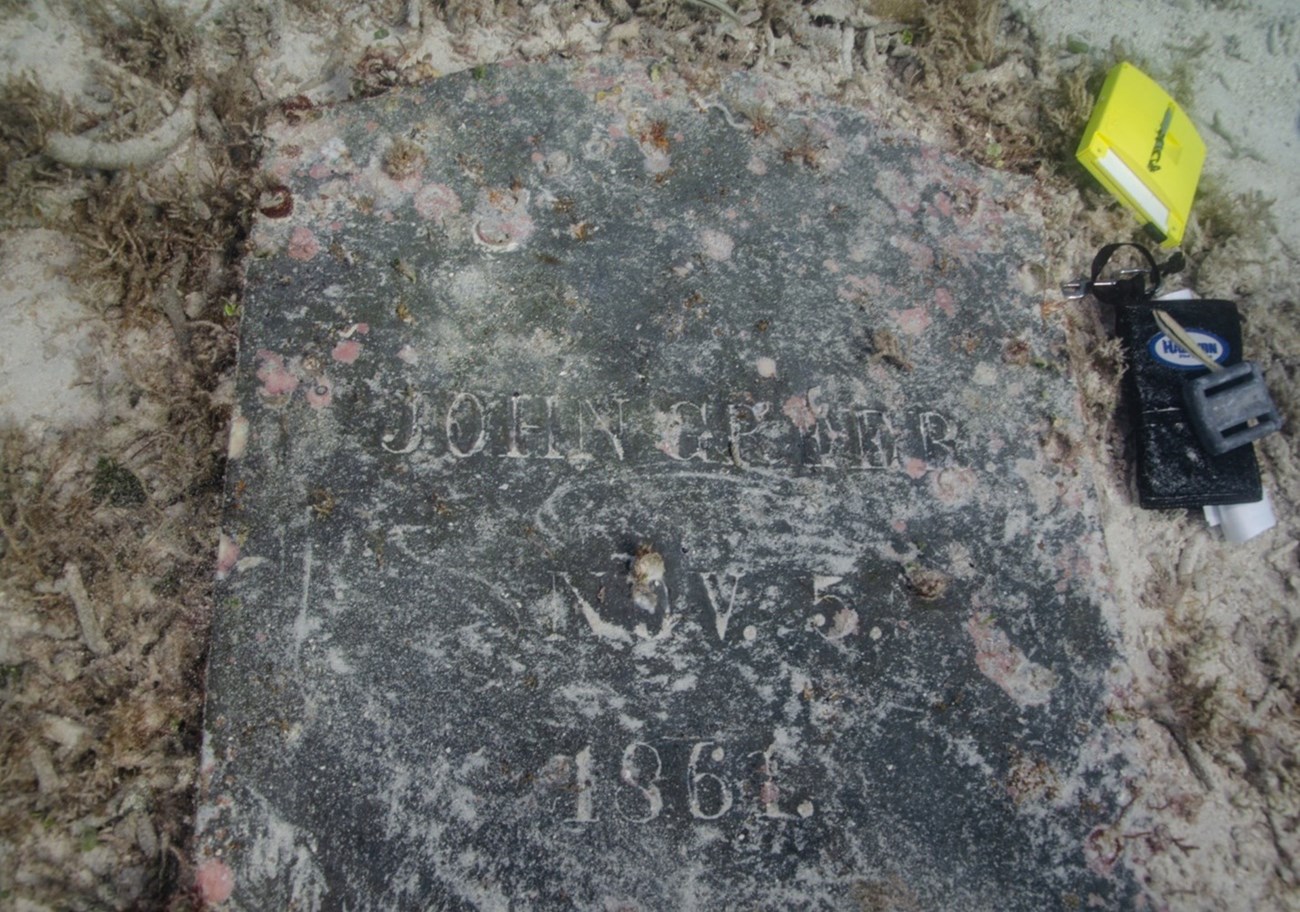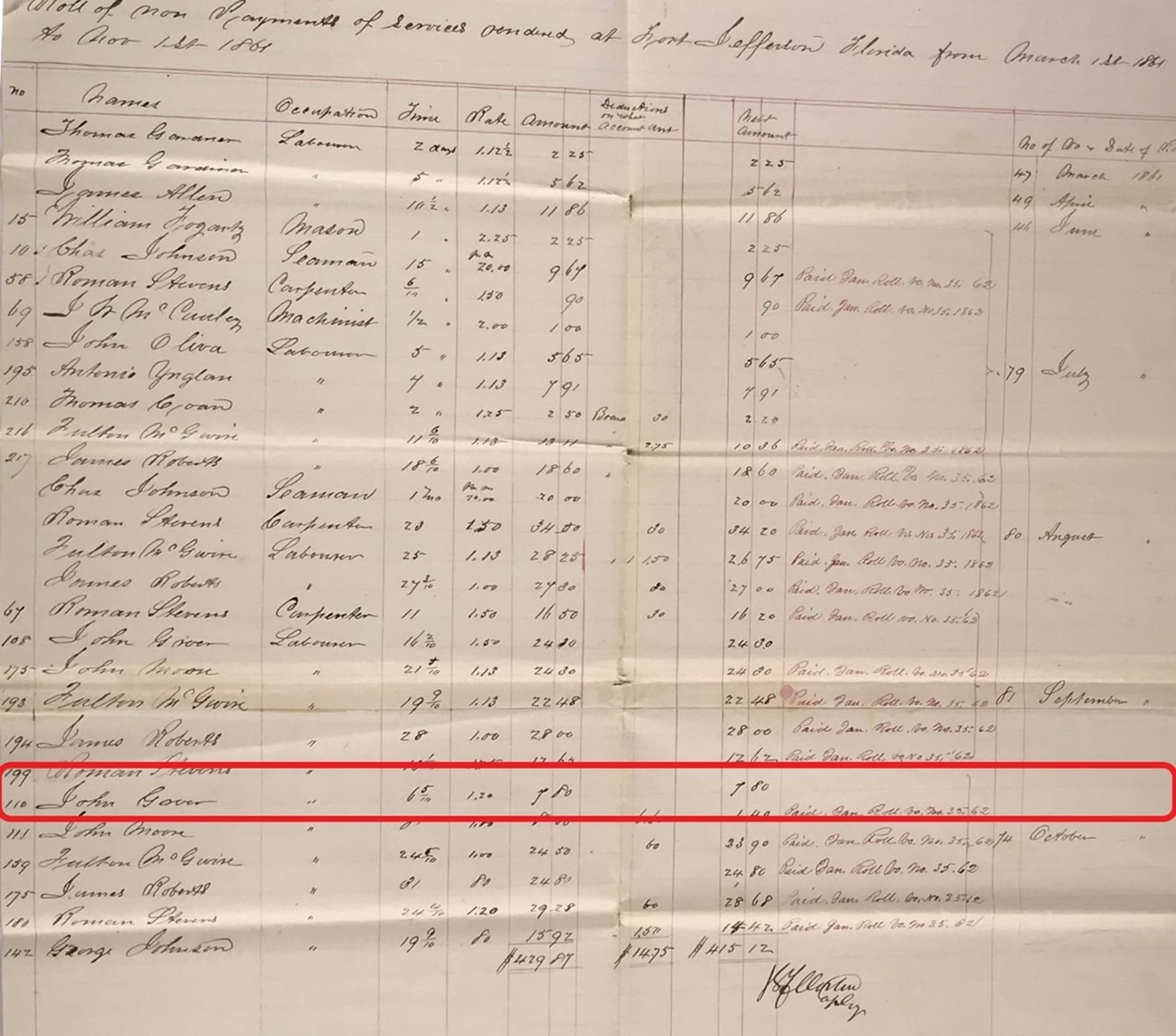Researchers at the Dry Tortugas National Park found a 19th century hospital and cemetery underwater. The archaeological remains were located near an island adjacent to Garden Key, Florida.
The national park says one grave has been identified to be that of John Greer, who was a laborer at Fort Jefferson. The gravestone in what was once the Fort Jefferson Post Cemetery cites Greer's name and his death on November 5, 1861. There could be dozens of people, mostly U.S. soldiers, buried in the underwater cemetery, according to historical records.

The National Park Service says the islands and waters surrounding Fort Jefferson were mostly known for a military prison during the Civil War. But, as the population there increased, so did the risk of disease. Quarantine hospitals, like the one found underwater, were built on several islands near Garden Key. Many patients there were treated for yellow fever between 1890 and 1900.

In a press release, Joshua Marano, who is the maritime archaeologist for the south Florida national parks and project director for the survey, spoke to what can unfold from the discovery.
"This intriguing find highlights the potential for untold stories in Dry Tortugas National Park, both above and below the water. Although much of the history of Fort Jefferson focuses on the fortification itself and some of its infamous prisoners, we are actively working to tell the stories of the enslaved people, women, children and civilian laborers."

The discovery also underscores the impact of climate change, particularly in the Dry Tortugas. The hospital and cemetery were once above water, but NPS says many of the islands moved over time, while climate change and major storm events caused some of those islands to settle and erode beneath the waves.
Trending stories at Scrippsnews.com


